Pickleball, one of the fastest-growing sports in the world, is played by people of all ages and skill levels. Though its ease of access and social nature render it a popular pastime, repetitive motions and fast, high-impact actions can result in strain, fatigue, and chart chronic injuries. As professional and amateur athletes look for new ways to enhance performance and aid recovery, red light therapy (RLT) is becoming a valuable tool in any arsenal for improving endurance, injury prevention, and recovery time.

Managing Chronic Conditions Through RLT
A common injury among pickleball players came from repeated movements, sudden changes in their direction, and conditions caused by hours of play[1]. Red light therapy reduces inflammation, stimulates cellular repair, and increases circulation, all of which help manage these issues.
Addressing Tendonitis and Repetitive Strain Injuries
Tendonitis is common among pickleball players and is caused when tendons become inflamed from use. Tendon injuries heal faster when treated with red light therapy, which indirectly activates mitochondrial functions and improves cell activity, producing extra energy to repair tissues.
RLT can also relieve repetitive strain injuries, like wrist and elbow pain, from frequent paddle use. It penetrates deeply into the tissues, decreasing oxidative stress and increasing blood flow, promoting faster recovery, and preventing chronic pain[2].
Long-term Benefits for Joint Health
The quick movements and abrupt stops of pickleball can lead to joint pain for many players. Over time, cartilage can erode, causing stiffness and pain. Red light therapy promotes joint health by stimulating collagen production, improving flexibility, and reducing inflammation in the synovial fluid. These advantages can slow the course of arthritis and other degenerative joint diseases, allowing the players to be on the court longer.
Age-Specific Applications of RLT
With pickleball gaining popularity among all age ranges, it is necessary to understand the needs of different demographics. Younger and older athletes alike can greatly benefit from the targeted repair properties of red light therapy.
Supporting Recovery in Senior Players
Pickleball is popular among senior players, but your muscles and joints need more time to recover when you get older. This is where RLT comes in, as it promotes the repair of damaged tissues, which helps reduce post-game soreness. Additionally, its capacity to promote ATP (adenosine triphosphate) production in cells enables the muscles of elderly athletes to function better and to last longer, making it simpler to engage in sports or everyday activities.
Preventing Age-Related Performance Decline
Finding exercise that maintains mobility when aging is often tricky to do when flexibility, time, and pain avoidance kick in. Red light therapy mitigates these effects by improving muscle endurance, supporting neuroplasticity (which may lead to better coordination), and maintaining strength in connective tissues. Older players often find themselves struggling to keep up with younger competitors, but using RLT can help improve their performance and keep them in the game for longer.

Optimizing Athletic Performance with RLT
For players looking to compete, tapping into every bit of physical potential is key. These therapeutic red or near-infrared benefits can enhance performance by optimizing muscle recovery, endurance, and overall strength.
Muscle Enhancement and Recovery Benefits
After an intense pickleball session, muscle soreness and fatigue set in, impairing a player's ability to train consistently. RLT decreases inflammation and oxidative stress, which enables faster recovery of the muscles. Research shows that red light therapy increases muscle growth and delays muscle fatigue by improving oxygen supply and delaying lactic acid accumulation[3]. This enables players to bounce back quicker and get back on the court stronger.
Professional Players' Success Stories
Elite athletes in many sports have begun using RLT as part of their training protocols. Although research into pickleball players is still ongoing, many professional and semi-professional athletes are implementing RLT into their routines to optimize their performance. Tennis players—inherently endure demands similar to those that pickleball players—reported faster recovery times, improved endurance, and decreased injury rates with regular use of red light therapy. The use of RLT will continue to evolve in the sport as more pickleball professionals begin to use it.
Implementing RLT in Your Training Regime
Creating an Effective RLT Schedule
To get the best results, RLT usage is advised before or after matches. Pre-game sessions (10-20 mins) warm up the muscles, increase circulation and minimize injuries. Additional post-game sessions (15-30 minutes) are also beneficial by reducing inflammation and facilitating cellular repair. RLT can be done 3–5 days a week and you will see an improvement in post-workout recovery and performance drastically.
Personalizing Treatment Protocols
Each athlete's body reacts uniquely to red light therapy, so treatment must be customized according to individual requirements. Individual factors such as injury history, how often you play or train, and personal recovery rate should be considered. Chronic pain players will likely want more sessions, whereas performance-related players may utilize RLT in shorter bursts with more accuracy. Working with a sports therapist or RLT expert can tailor a specific plan.
The Future of RLT in Pickleball
As red light therapy becomes more popular, its use will certainly expand in pickleball. With further research and growing technology, more accessible treatment options and more targeted treatment options are finally within reach.
Emerging Research and Development
Research on RLT and sports performance is growing on RLT, as some studies look for the specific influence of RLT on endurance, strength, and injury prevention. Wearable RLT devices, portable therapy panels, and sophisticated wavelengths designed for athletic recovery are easing RLT integration for players.
Establishing Standard Treatment Guidelines
Optimal Wavelengths
- 630-660 nm (red light): Increases blood flow and superficial healing.
- 810-850 nm (near-infrared light): Penetrates deeper for muscle and joint recovery.
Application Methods
- Handheld devices: Extend processes to critical pain points.
- Panels: Full-body restoration.
- Wearables: Provide easy, continuous therapy.
Best Practices
- For the best results, use RLT alongside stretching, massage, hydration, and cold therapy.
- Using the proper protocols helps them to use these methods safely and accurately, allowing long-term results without injury.
Conclusion
The bottom line is that red light therapy is a total game-changer for pickleball players wanting to improve performance, recover faster, and prevent injury. Do you suffer from chronic conditions that haven't responded to traditional treatments? With the regular implementation of RLT into a training program, pickleball players can extend both their careers on the court and their ability to continue playing without injury. With research ongoing, the future of red light therapy for pickleball is looking very bright!
References
- Azar, Frederick M et al. “Pickleball: A Standard Review of Injury Prevalence and Prevention in a Rapidly Growing Sport.” The Journal of the American Academy of Orthopaedic Surgeons vol. 32,22 (2024): e1130-e1141. doi:10.5435/JAAOS-D-24-00151
- Pinto, Henrique D et al. “Photobiomodulation Therapy Improves Performance and Accelerates Recovery of High-Level Rugby Players in Field Test: A Randomized, Crossover, Double-Blind, Placebo-Controlled Clinical Study.” Journal of Strength and Conditioning Research vol. 30,12 (2016): 3329-3338. doi:10.1519/JSC.0000000000001439
- Borges, Lucio Santos, et al. “Light-emitting diode phototherapy improves muscle recovery after a damaging exercise.” Lasers in medical science vol. 29,3 (2014): 1139-44. doi:10.1007/s10103-013-1486-z



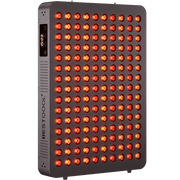









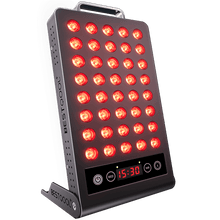
 Small
Small
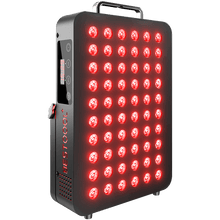
 Moderate
Moderate
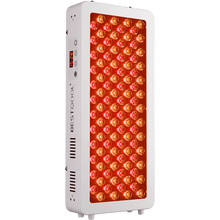
 Moderate
Moderate
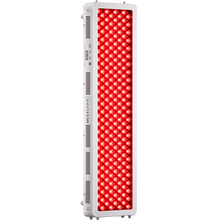
 Moderate
Moderate
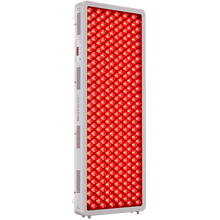
 Full
Full



